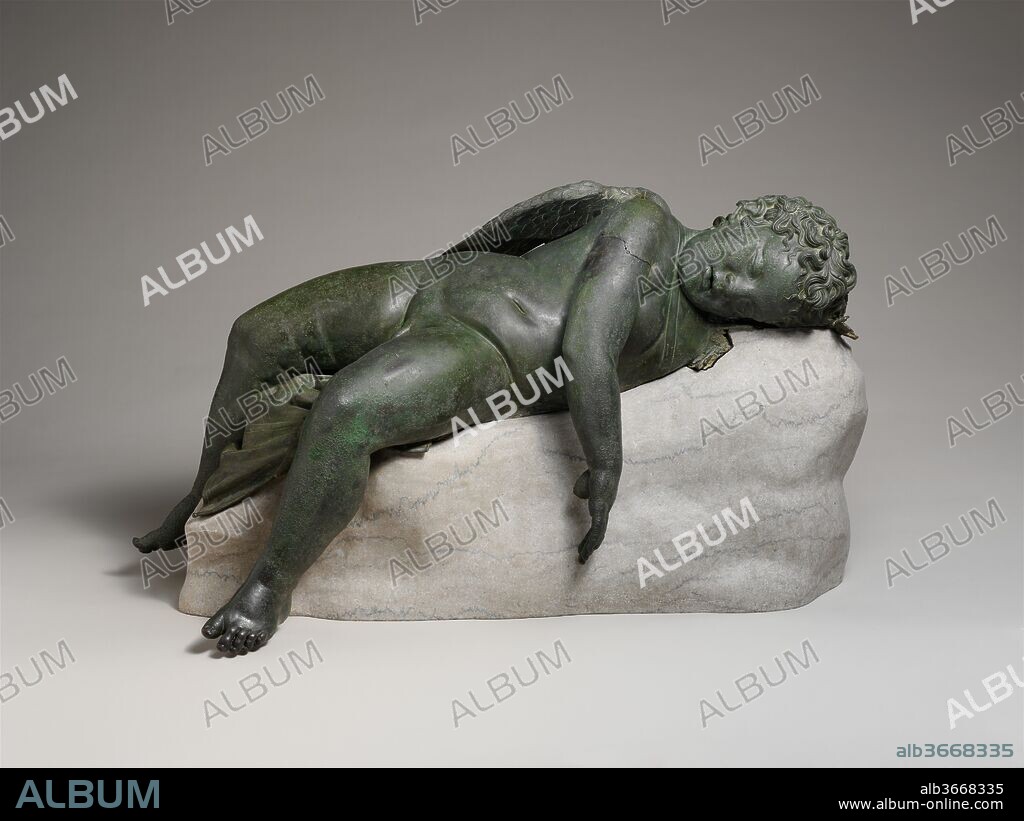alb3668335
Bronze statue of Eros sleeping

|
Zu einem anderen Lightbox hinzufügen |
|
Zu einem anderen Lightbox hinzufügen |



Haben Sie bereits ein Konto? Anmelden
Sie haben kein Konto? Registrieren
Dieses Bild kaufen.
Nutzung auswählen:

Titel:
Bronze statue of Eros sleeping
Untertitel:
Siehe automatische Übersetzung
Bronze statue of Eros sleeping. Culture: Greek. Dimensions: 16 1/2 × 14 × 33 9/16 in., 275 lb. (41.9 × 35.6 × 85.2 cm, 124.7 kg)
Height (w/ base): 18 in. (45.7 cm). Date: 3rd-2nd century B.C..
The Hellenistic period introduced the accurate characterization of age. Young children enjoyed great favor, whether in mythological form, as baby Herakles or Eros, or in genre scenes, playing with each other or with pets. This Eros, god of love, has been brought down to earth and disarmed, a conception considerably different from that of the powerful, often cruel, and capricious being so often addressed in Archaic poetry. One of the few bronze statues to have survived from antiquity, this figure of a plump baby in relaxed pose conveys a sense of the immediacy and naturalistic detail that the medium of bronze made possible. He is clearly based on firsthand observation. The support on which the god rests is a modern addition, but the work originally would have had a separate base, most likely of stone.
This statue is the finest example of its kind. Judging from the large number of extant replicas, the type was popular in Hellenistic and, especially, Roman times. In the Roman period, Sleeping Eros statues decorated villa gardens and fountains. Their function in the Hellenistic period is less clear. They may have been used as dedications within a sanctuary of Aphrodite or possibly may have been erected in a public park or private, even royal, garden.
Technik/Material:
Bronce
Zeitraum:
Hellenistic period
Museum:
Metropolitan Museum of Art, New York, USA
Bildnachweis:
Album / Metropolitan Museum of Art, NY
Freigaben (Releases):
Bildgröße:
4200 x 3150 px | 37.9 MB
Druckgröße:
35.6 x 26.7 cm | 14.0 x 10.5 in (300 dpi)
Schlüsselwörter:
 Pinterest
Pinterest Twitter
Twitter Facebook
Facebook Link kopieren
Link kopieren Email
Email
